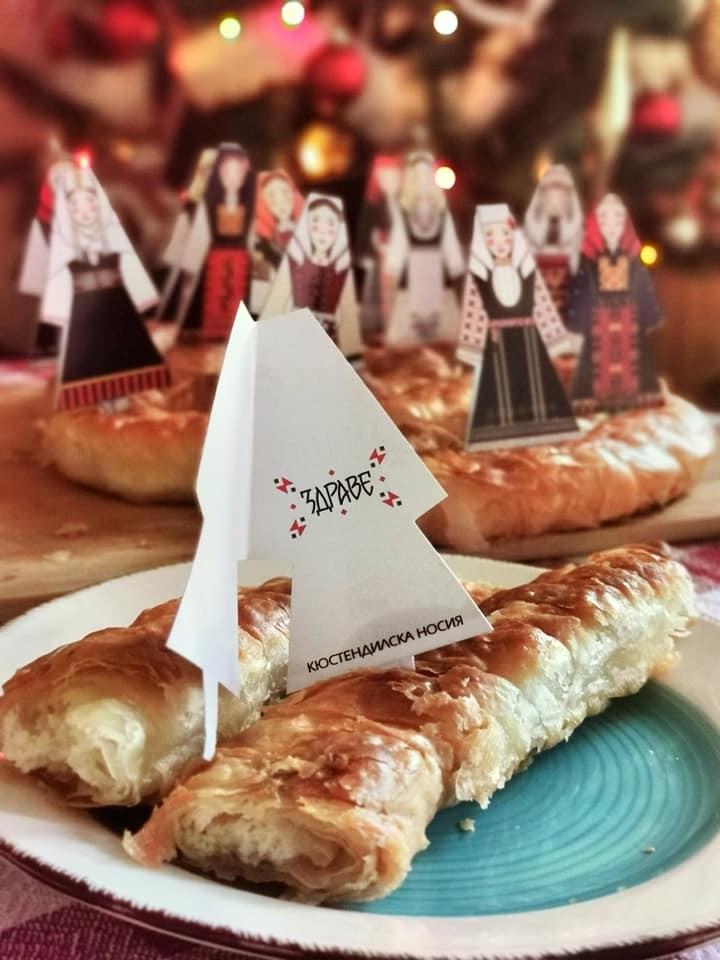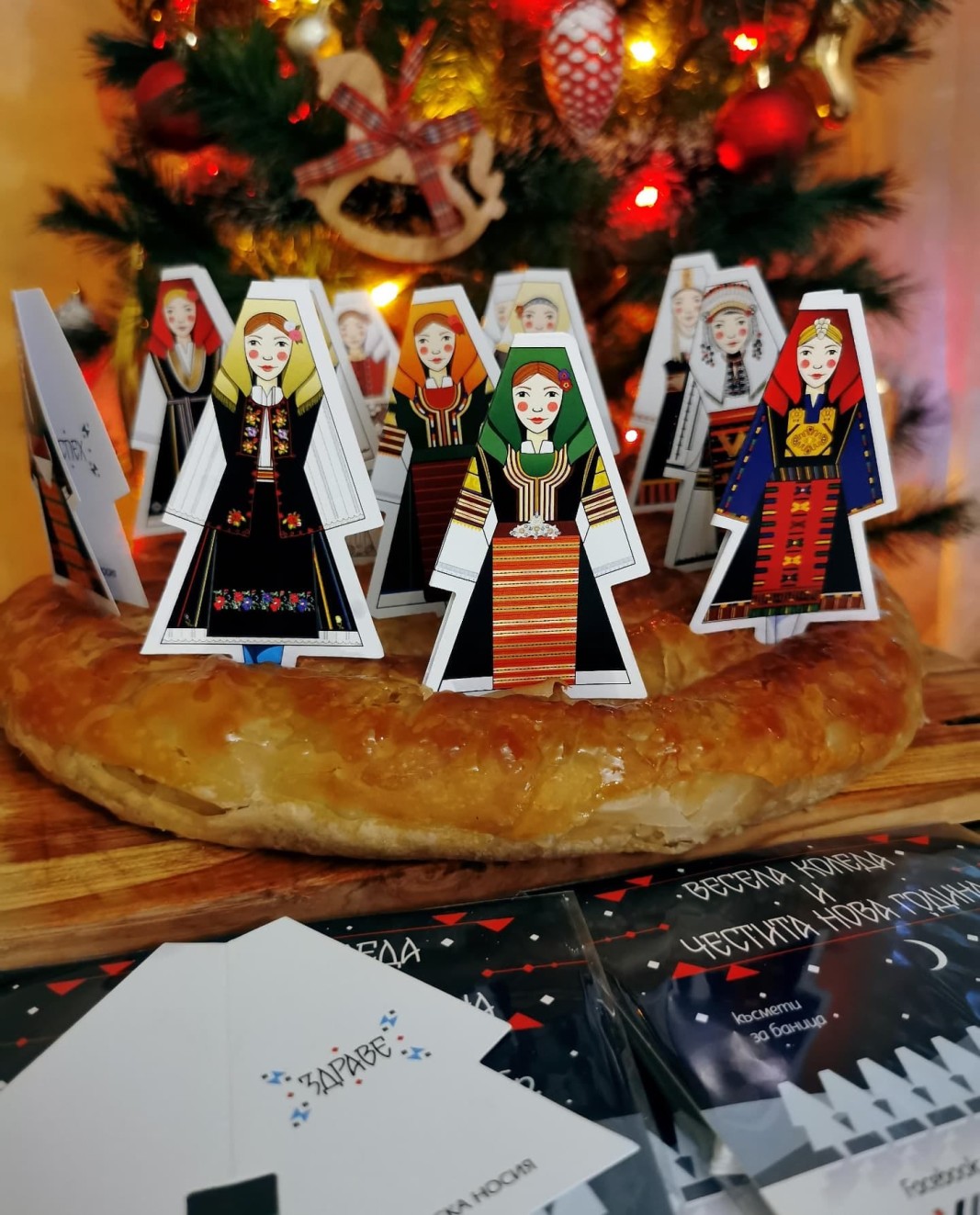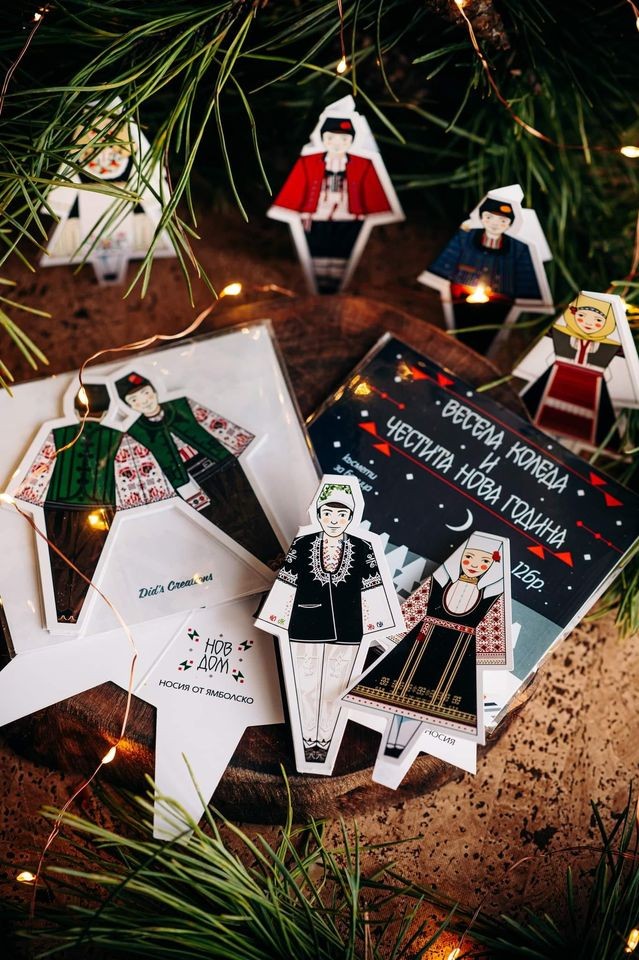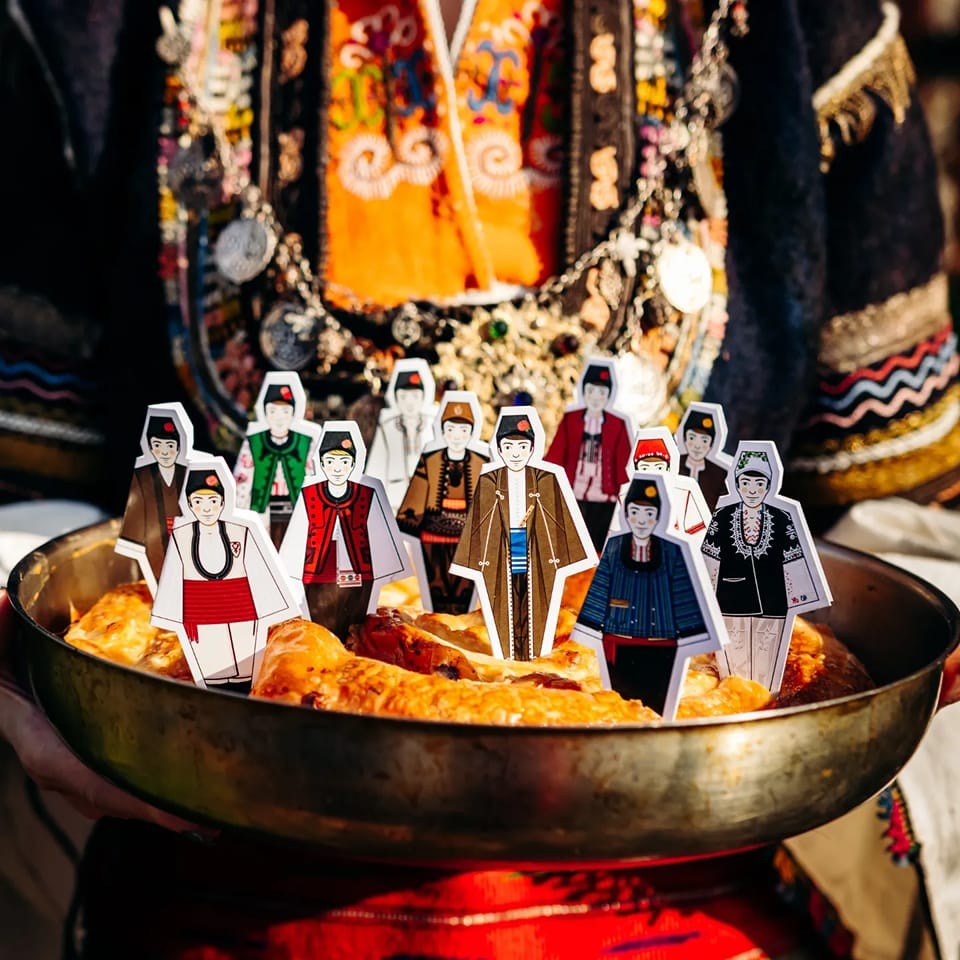On New Year’s eve there is one thing all people in Bulgaria put on the table – banitsa with lucky charms. Banitsa is made of filo pastry with filling in between the pastry sheets made of cheese, eggs and butter. Different kinds of meat can be added to the filling, or leek, spinach etc. The banitsa is cut up into pieces and each member of the household gets a lucky charm for the coming year.
Once, women used cornel twigs with different numbers of buds, each signifying different kinds of “luck”, and tucked them in between the pastry sheets. As time went by the tradition changed - with lucky charms of all shapes and sizes, and made of different material signifying serious or jocular wishes. where they are placed has also changed – nowadays they are mostly simply stuck on top of the banitsa.
Young artist and designer Diana Mihova makes lucky charms with wishes for love, a new home, health, happiness etc. But she has chosen to make a very different kind of lucky charms. And as all good things, the idea came spontaneously: 
“It was my aunt’s idea – she does folk dancing, and she wanted to give her friends presents that are fun. She asked me to draw them but I am an artist and designer, so I couldn’t just sit down and do something like that. So, the first thing I did was to stylize them down to a simple shape, and then I vectorized them using a programme.”
Diana Mihova’s lucky charms are unorthodox, shaped as silhouettes depicting girls and boys clad in the traditional clothing of the different folklore regions of Bulgaria. And she decided to fashion them in this way for a reason:
“It turns out there are a lot of people who have no idea what the authentic national costumes of the regions look like. I myself am an illustration of this – I used to have zero interest until I started making them myself,” Diana Mihova says in an interview with Radio Bulgaria. “I wanted them to be as authentic as possible. I would look at the original models, some more than 100 years old. I also consulted people who are competent in this field. And thanks to these lucky charms, I myself learnt a lot about the traditional clothing in Bulgaria, and I am very pleased about it.”
What proved most difficult was fashioning the backs of the figures. 
“We wanted everyone to be able to see the costume from the front and from behind. There aren’t many photographs online or in books, and for some elements I have used my imagination – looking at some photograph or model from the side and trying to imagine what it is like from behind, especially with men’s clothing. When I was making one of the male costumes I even called up a museum for more information because it is a matter of authenticity, not just photographs of clothes,” Diana says.
The result is stunning, with very realistic details. As a matter of fact, the 12 girls were made first, but then Diana Mihova thought to herself they would look lonely on the banitsa, so she created the male equivalents of the girl’s costumes. The font used to write the names of the costumes is also her own. 
Translated and posted by Milena Daynova
Photos: Ivelina Cholakova
In the Schaarbeek municipality of Brussels, there is a small corner of Bulgaria inside the Sophia Municipal Library, housing a valuable collection of Bulgarian books. Librarian Aaron Willem played a key role in setting up the Bulgarian section of the..
Shepherd of the soul, priest of all with open hearts, modern prophet – these are some of the definitions with which Pope Francis remains in the memory of people regardless of affiliation and faith. In 2019, he visited Bulgaria,..
"The socio-political processes among the Bulgarian communities in Albania and Kosovo from the early 19th century to the present, and the influence they have on the demographic development and territorial distribution of our compatriots in these..
This evening, at 6pm, a prayer service will be held in the courtyard of the Great Basilica, followed by a festive concert dedicated to the 1160th..
For the ninth year in a row, the Bulgarian Society for the Protection of Birds is organising the Let’s Count the Sparrows campaign . It takes place..
Dozens of enthusiasts and nature lovers will kick off the 44th edition of the Move and Win campaign with a spring hike to Bozhur Hut. The first walk will..

+359 2 9336 661
